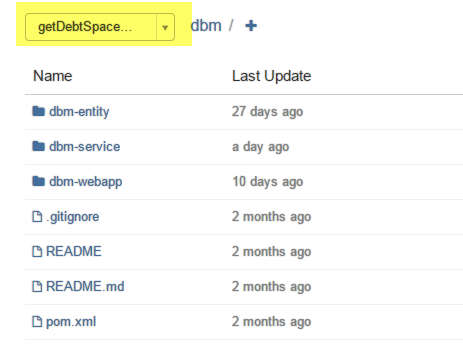I am working in getDebtSpaceData branch.
Assume the DebtTypeEnum had been updated in master branch
1 2 3 4 5 6 7 8 9 10 11 12 13 14 15 16 17 18 19 20 21 22 23 24 25 26 27 28 29 30 31 32 33 34 35 36 37 38 39 40 41 42 43 44 | package gov.nta.dbm.enumeration; // TODO: Auto-generated Javadoc /** * The Enum DebtTypeEnum. */ public enum DebtTypeEnum { /** The a. */ A("A", "公債"), /** The b. */ B("B", "國庫券"), /** The c. */ C("C", "中長借"), /** The d. */ D("D", "短借"); private String code; private String name; private DebtTypeEnum(String code, String name) { this.code = code; this.name = name; } /** * Gets the code. * * @return the code */ public String getCode() { return code; } /** * Gets the name. * * @return the name */ public String getName() { return name; } } |
Therefore, the DebtTypeEnum in getDebtSpaceData branch is out-of-date.
1 2 3 4 5 6 7 8 9 10 11 12 13 14 15 16 17 18 19 20 21 22 23 24 25 26 27 28 29 30 31 32 33 34 35 36 37 38 39 40 41 42 43 44 | package gov.nta.dbm.enumeration; // TODO: Auto-generated Javadoc /** * The Enum DebtTypeEnum. */ public enum DebtTypeEnum { /** The a. */ A("A", "公債"), /** The b. */ B("B", ""), /** The c. */ C("C", ""), /** The d. */ D("D", ""); private String code; private String name; private DebtTypeEnum(String code, String name) { this.code = code; this.name = name; } /** * Gets the code. * * @return the code */ public String getCode() { return code; } /** * Gets the name. * * @return the name */ public String getName() { return name; } } |
If I would like to pull up-to-date code from master branch and merge into getDebtSpaceData branch. How to do this?
Answer
Step1. Right click => Team => Merge
Step2. Choose Master => Merge
Step3. Click OK
Reference


















